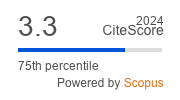Article | Open Access
Poverty‐Armed Conflict Nexus: Can Multidimensional Poverty Data Forecast Intrastate Armed Conflicts?
| Views: | 1540 | | | Downloads: | 996 |
Abstract: Poverty is widely acknowledged as a significant factor in the outbreak of armed conflicts, particularly fueling armed conflict within national borders. There is a compelling argument positing that poverty is a primary catalyst for intrastate armed conflicts; reciprocally, these conflicts exacerbate poverty. This article introduces a statistical model to forecast the likelihood of armed conflict within a country by scrutinizing the intricate relationship between intrastate armed conflicts and various facets of poverty. Poverty, arising from factors such as gender inequality and limited access to education and public services, profoundly affects social cohesion. Armed conflicts, a significant cause of poverty, result in migration, economic devastation, and adverse effects on social unity, particularly affecting disadvantaged and marginal groups. Forecasting and receiving early warnings for intrastate armed conflicts are crucial for international policymakers to take precautionary measures. Anticipating and proactively addressing potential conflicts can mitigate adverse consequences and prevent escalation. Hence, forecasting intrastate armed conflicts is vital, prompting policymakers to prioritize the development of effective strategies to mitigate their impact. While not guaranteeing absolute certainty in forecasting future armed conflicts, the model shows a high degree of accuracy in assessing security risks related to intrastate conflicts. It utilizes a machine‐learning algorithm and annually published fragility data to forecast future intrastate armed conflicts. Despite the widespread use of machine‐learning algorithms in engineering, their application in social sciences still needs to be improved. This article introduces an innovative approach to examining the correlation between various dimensions of poverty and armed conflict using machine‐learning algorithms.
Keywords: armed conflict; forecasting models; inequality; poverty
Published:
© Çağlar Akar, Doğa Başar Sarıipek, Gökçe Cerev. This is an open access article distributed under the terms of the Creative Commons Attribution 4.0 license (http://creativecommons.org/licenses/by/4.0), which permits any use, distribution, and reproduction of the work without further permission provided the original author(s) and source are credited.


